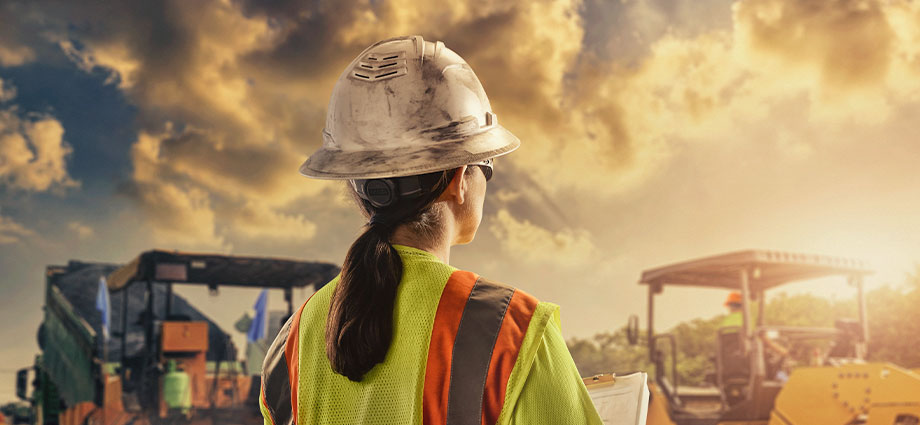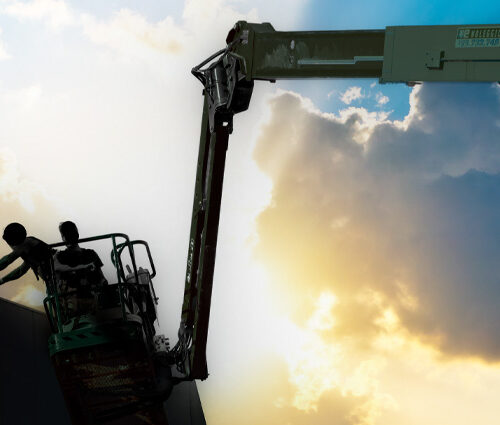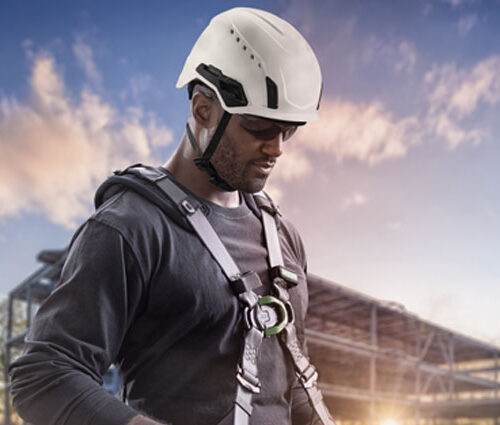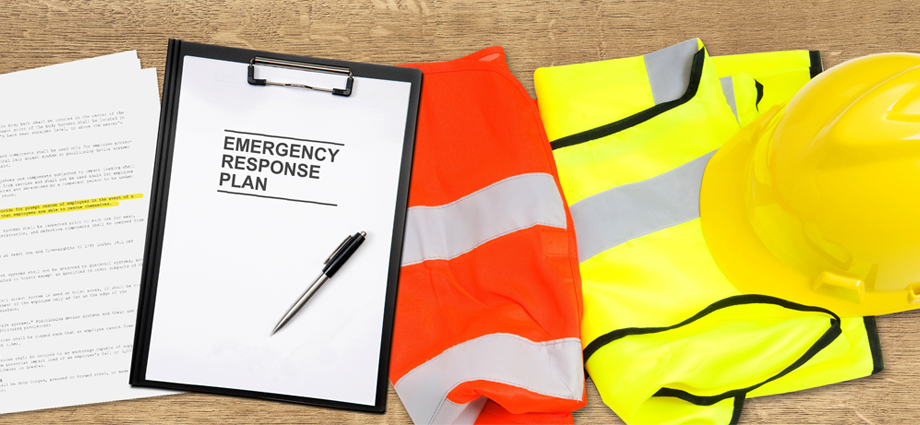
Imagine this hypothetical employee named “Bob”. Bob’s an excellent worker. He knows what he’s doing, and his boss knows he can count on him to get the job done and done right.
We’d all like to hire Bob, right?
There’s another reason Bob’s one of the best team members anyone could ask for… he always uses his safety equipment. He knows how vital PPE (personal protective equipment) is for performing each job safely, without injury.
But… accidents do happen unexpectedly.
That’s why they call them accidents, right?
And while using the proper PPE helps reduce the impact of accidents, there are additional action steps to take when falls from heights are involved.
You already know that working at heights presents some unique hazards. That’s why you insist that your workers use full-body harnesses and the appropriate fall-arrest system.
You’ve trained them how to inspect and don them properly, realizing that a proper fit is crucial to their effectiveness. You’ve shown them how to assess anchor points and attach to them correctly.
But… the training can’t stop there.
You must also teach them about orthostatic intolerance, also called suspension trauma, and how it affects the body.
They must understand that a rapid response to a fall accident is critical to protecting a worker from further injury, and possibly death.
Here’s why.
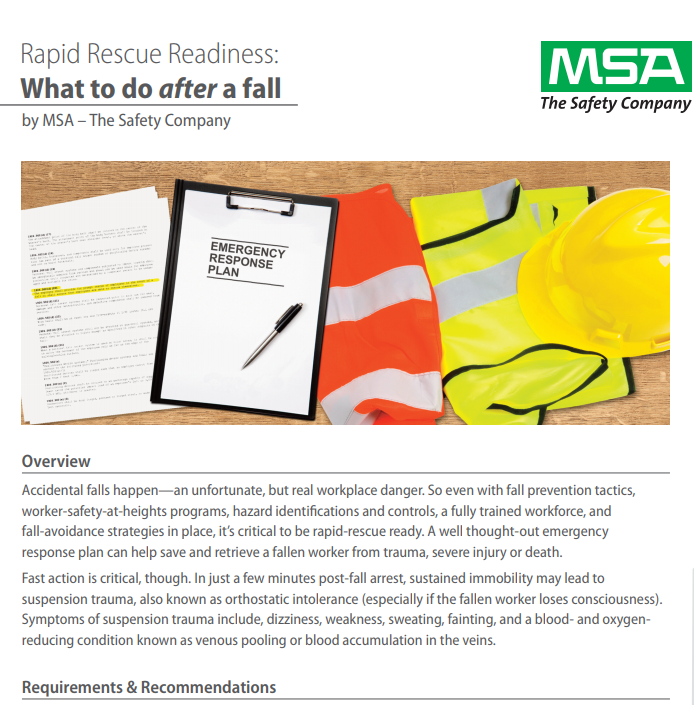
Download the whitepaper to learn more about what to do after a fall to prevent suspension trauma.
What are orthostatic intolerance and suspension trauma?
You’ve probably experienced orthostatic intolerance (OI) yourself. It can happen without a hazardous work environment, and without you realizing what’s going on.
Here’s an abbreviated description. Anytime you stand or sit for an extended period with little or no leg movement, OI is possible. It can be the reason people faint after standing a long time without moving.
(More than one bridesmaid or best man has toppled over during a long wedding.)
It can happen if you sit for a long time as well, perhaps at your work desk or in your easy chair while binge-watching your favorite TV show.
You stand up quickly, and get a little light-headed or dizzy. It takes a few seconds to get your balance. It’s kind of a strange feeling, but passes fairly quickly.
That’s orthostatic intolerance… on a small scale.
Why and how does that happen, anyway?
In the safety and health bulletin, Suspension Trauma/Orthostatic Intolerance – a joint paper from the U.S. DOL and OSHA (SHIB 03-24-2007, updated 2011) – the causes and symptoms of OI and suspension trauma are explained. The paper also outlines potential hazards and recommendations to prevent permanent injury.
It’s all about the body’s circulatory system. We understand the main components: the heart (the two-stage pump), the arteries and veins (the supply and return piping), and the blood (the fluid).
Your heart pumps oxygen-enriched blood into the arteries. It flows throughout the system, feeding your organs and other body parts. The oxygen-depleted blood flows back to the heart through the veins, drawn through the superior vena cava (main vein) by the right ventricle (the intake pump and valve).
Interestingly, the circulatory system in an adult is approximately 60,000 miles long. Blood completes the circuit in about 20 seconds! Obviously, the heart must have some help moving all that fluid around the body.
It does… and leg muscles are one of the “auxiliary pumps.” When you move them, it helps push your blood along the circulatory system more efficiently.
That’s the reason you feel dizzy or disoriented when you stand up quickly. Your brain and other organs are slightly starved of oxygen because the lack of leg movement caused blood to collect in your legs, a condition called venous pooling.
Now, imagine that you are suspended in a harness after a fall. The potential for venous pooling is increased and prolonged. That can lead to:
- Dizziness
- Weakness
- Sweating
- Fainting
- Increased heart rate
To find out more about how your heart works, check out this article from WebMD.
If the worker is suspended for an extended period of time, orthostatic intolerance — suspension trauma — can set in. According to a joint paper from the U.S. Department of Labor and OSHO (SHIB 03-24-2004, updated 2011):
Prolonged suspension from fall arrest systems can cause orthostatic intolerance, which, in turn, can result in serious physical injury, or potentially, death. Research indicates that suspension in a fall arrest device can result in unconsciousness, followed by death, in less than 30 minutes.
That’s why your employees’ training must include more than preventing a fall and using a fall protection system. It must also include an emergency response plan for recovering a coworker in the event of a fall.
And recover them quickly.
Preparation and the 4 types of rescue
Preparing for a potential fall accident should be an important part of your overall safety program and training. Because of the health and life hazards, emergency medical preparations must be considered.
You may need medical staff onsite. Or, as an alternative, trained responders for first-aid and CPR. It would be best to have an attendant monitoring the worker (a requirement when doing any permit-required confined space tasks).
Additionally, understand the four types of rescue, and the equipment involved in each one.
- Self-rescue
- Assisted rescue
- Mechanically aided rescue
- Pick-off rescue
The first scenario is a self-rescue. In this instance, the fallen worker is conscious and able to perform the rescue unassisted. However, there must be equipment within reach that the worker can use. This can include:
- A fixed ladder in close proximity to the worker
- A fixed, vertical lifeline, or
- An integrated self-rescue harness
With these options available, the worker makes a controlled, smooth descent.
In an assisted rescue, the fallen worker is aware and able to contribute to the process. A portable rescue ladder can be used. In some instances, a mechanical winch, operated by another team member, can hoist the fallen worker to safety.
For a worker that’s conscious, but unable to assist (possibly injured), you may need to perform a mechanically aided rescue. An aerial lift with a basket is often used.
An incapacitated or unconscious worker can’t contribute to the rescue at all. In this case, a pick-off rescue is used. Other team members must perform the descent operations, and immediately render any necessary medical attention.
This isn’t time for spur-of-the-moment or snap decisions. Proper planning before an accident occurs is essential for a successful rescue.
But… there is also a way to lessen the effect of venous pooling during suspension.
“Steps” to relieve suspension trauma
Remember Bob, the top-notch employee who always wore his PPE, including fall protection harness and lanyard?
Well, Bob did fall, but his descent was stopped by his equipment. Now there are only six minutes to get to him and perform the rescue.
What happens during that time?
As Bob is suspended in midair, the leg straps on his harness pinch his arteries and veins, applying a tourniquet-like grip. But, if he can just move his legs, the pumping action will assist in getting his blood circulating again, slowing down the effects of venous pooling and suspension trauma.
How can he do that with nothing to stand on, though?
The addition of one, simple and easy to use device to his harness will allow Bob to pump his legs and help to prevent suspension trauma. Harness leg straps let Bob hook his feet into a ladder-like webbing that relieves the stress on his legs and blood vessels.
The device is available as an add-on feature that attaches easily to almost any harness. It’s positioned to be out of the way during work tasks, but easily deployed in a fall accident.
Some newer fall protection harnesses — such as our own V-FLEX™ Full-Body Harness — have the suspension safety straps integrated permanently on the harness.
They’re easy to use and, more importantly, always with the worker.
Final thoughts
Our imaginary worker, Bob, is safely on the ground now. He’s a little shook up, but he’ll survive… with all his body parts intact. The scant minutes between the initial fall and his rescue seemed like an eternity to him.
But thankfully, his employer had an excellent rapid response plan… and the equipment in place to perform a quick, safe rescue.
Want to learn more about preparing for rapid response fall rescues?
Be sure to check out OSHA regulation 29 CFR 1926.502(d)(20) and ANSI Z359.2-2007 to understand your required role in preventing injuries from a fall.
You can get more information about rapid response by downloading our free special report, “Rapid Rescue Readiness: What to do after a fall.”
We’re here to help keep your team safe — before and after a fall — because just like you…
We Know What’s At Stake.


